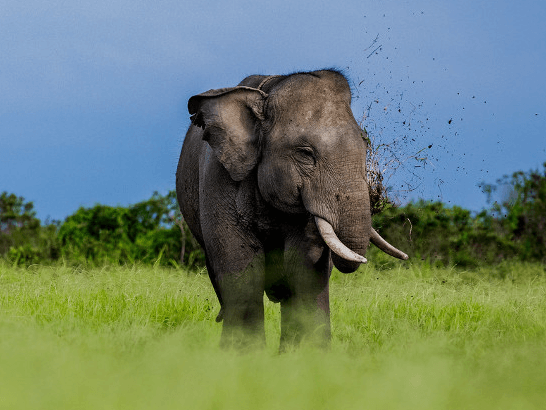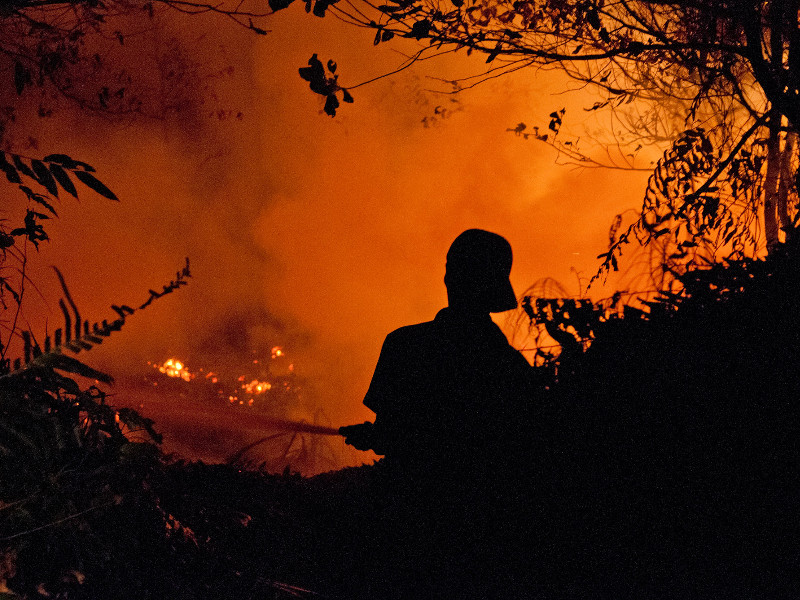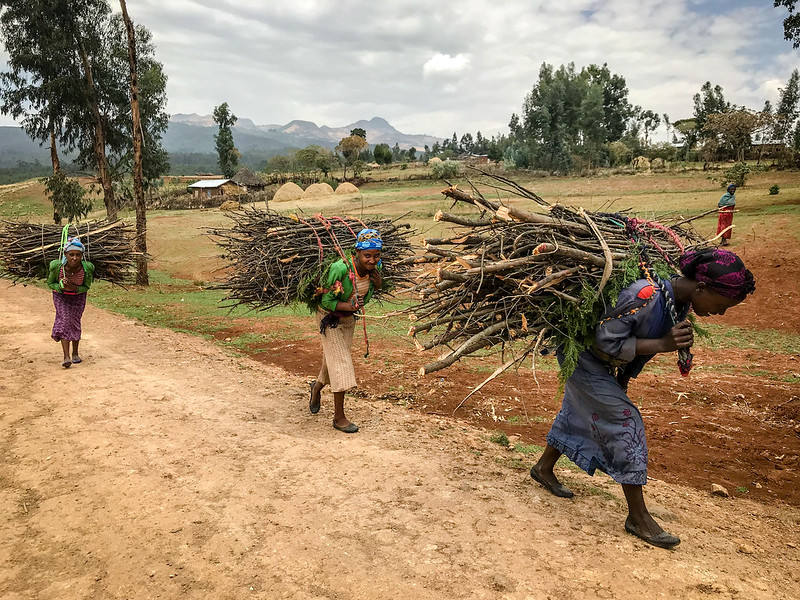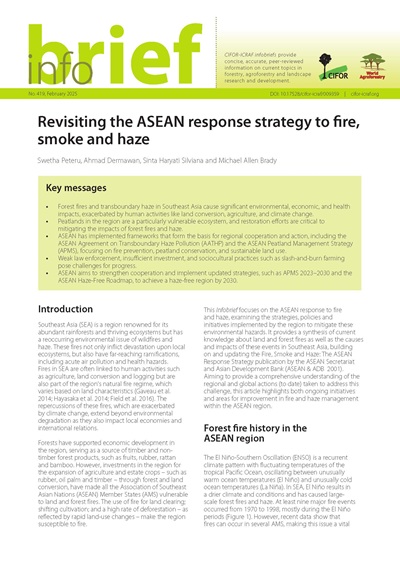Key messages
- Forest fires and transboundary haze in Southeast Asia cause significant environmental, economic, and health impacts, exacerbated by human activities like land conversion, agriculture, and climate change.
- Peatlands in the region are a particularly vulnerable ecosystem, and restoration efforts are critical to mitigating the impacts of forest fires and haze.
- ASEAN has implemented frameworks that form the basis for regional cooperation and action, including the ASEAN Agreement on Transboundary Haze Pollution (AATHP) and the ASEAN Peatland Management Strategy (APMS), focusing on fire prevention, peatland conservation, and sustainable land use.
- Weak law enforcement, insufficient investment, and sociocultural practices such as slash-and-burn farming pose challenges for progress.
- ASEAN aims to strengthen cooperation and implement updated strategies, such as APMS 2023–2030 and the ASEAN Haze-Free Roadmap, to achieve a haze-free region by 2030.
DOI:
https://doi.org/10.17528/cifor-icraf/009359Dimensions Citation Count:
Publication year
2025
Authors
Peteru, S.; Dermawan, A.; Silviana, S.H.; Brady, M.A.
Language
English
Keywords
forest fires, health hazards, human activities, monitoring, appropriate technology, water pollution, haze























